What types are there?
Marble in the interior can be real and imitation. Let’s consider the features of each type, the pros and cons of use.
Natural marble
Natural marble is produced in the form of plates, slabs, slabs of various sizes, as well as marble chips. By mixing it with polyester resin, you can get a strong countertop for any purpose. Flexible stone deserves special attention: a modern finishing material, which is a thin slice of stone glued to a flexible base.
Another option is the release in the form of ready-to-use products: marble countertop, wall tiles, floor tiles, mosaics, sinks. The advantages of natural material include:
- strength and durability (service life over 100 years);
- hygienic (bacteria, fungi, mold do not live on the surface);
- resistant to high temperatures;
- beautiful appearance.
Among the disadvantages, in addition to the high cost, is the complexity of processing. It is almost impossible to make a product from this stone on your own.
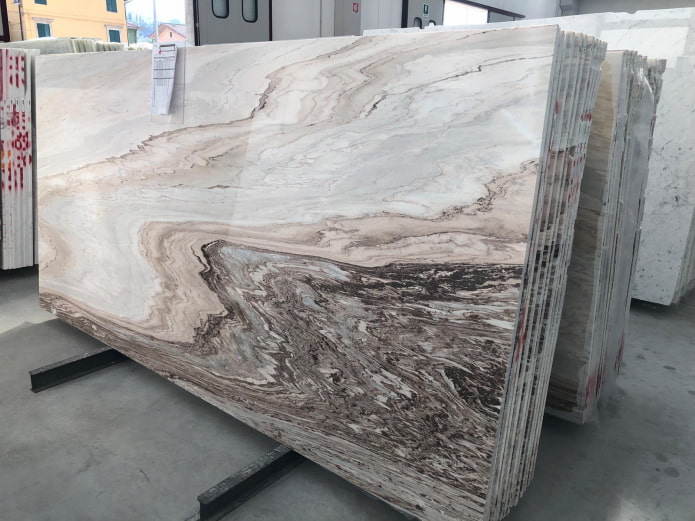
Imitation marble
Imitation stone is available in completely different formats and materials. General advantages of “fakes”:
- A variety of colors. In addition to natural tones, it can be quite unusual: pink, burgundy, blue.
- Ease of processing. PVC is cut with an ordinary knife, tiles with a special one – but even it can be laid on the walls or floor with your own hands.
- Favorable price. Any material that imitates the texture is cheaper than the original. Therefore, the decision to add marble to the interior will not cost much.
Ceramic tiles and porcelain tiles
Finishing rooms with marble tiles is a classic solution that will take root in any interior and fit into any budget. In construction stores, you can find many options for decorative coatings: from economy to luxury class.
Compared to natural white marble, tiles are less durable – but their wear resistance is often more than enough for decorating living spaces. Another drawback is the seams between the elements of porcelain tiles or tiles. But if the work is done well, they should not be conspicuous.
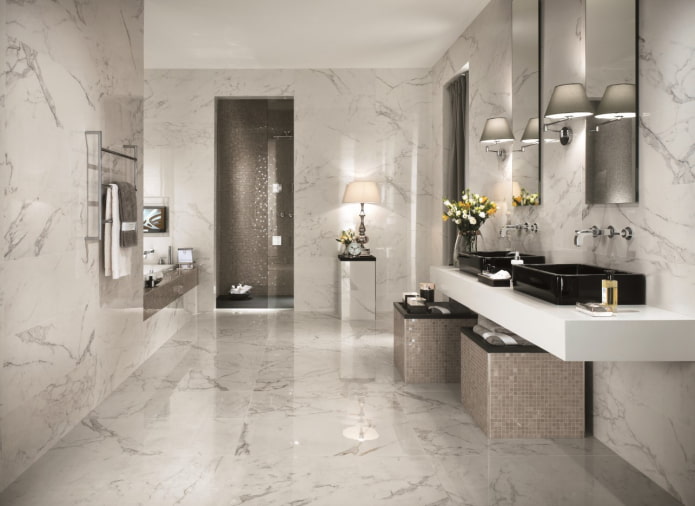
The photo shows light-colored porcelain tiles on the walls and floor
Decorative plaster
It is surprising that this material is rarely used for walls: glossy Venetian plaster is seamless, durable, and has an unrivaled visual resemblance to natural marble.
But you should trust a professional to imitate marble in the interior using plaster: only a worker with extensive experience can create a unique accent wall.
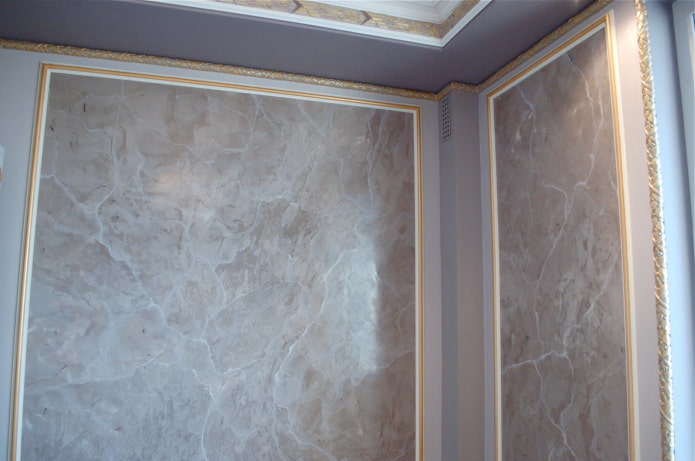
Wallpaper
The easiest way to fit stone into the interior of the living room is with wallpaper: high-quality gluing end to end will create a seamless surface in the right place. Wallpaper can be both standard: non-woven or vinyl, and self-adhesive. The latter are not afraid of water, easy to wash.
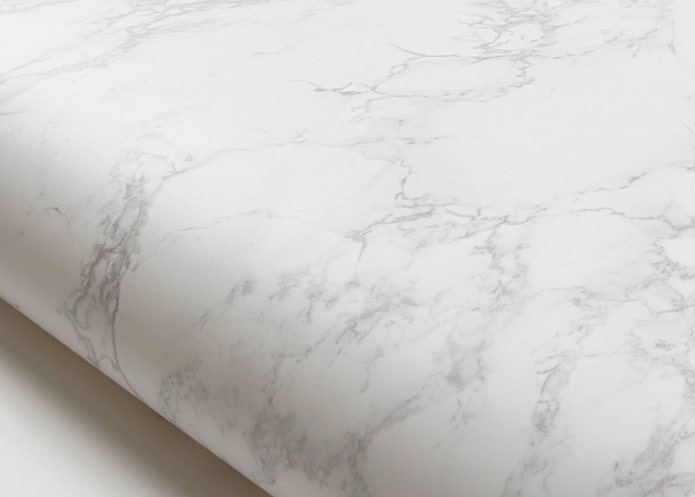
PVC panels
Budget plastic panels are weakly associated with the concept of “luxury” inherent in marble. But if the task is to decorate a bathroom on a budget, they are ideal! You can find various shades on sale: pink, blue, beige, gray. And also textures: imitation of tiles, sheet stone, etc.
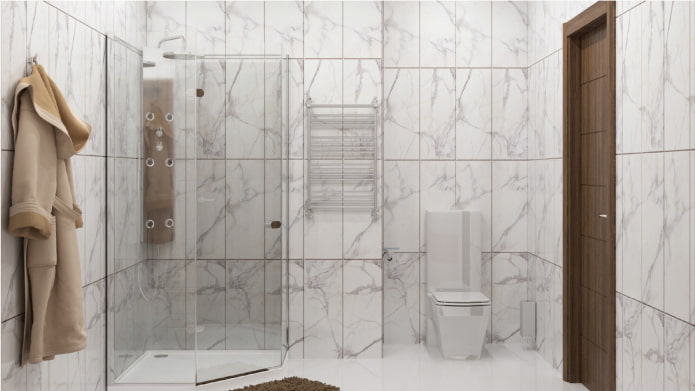
The photo shows the interior of a bathroom with PVC panels under marble tiles
Laminate
This material mainly imitates wood, but in the collections of manufacturers you can also find expensive stone textures. For example, the Impressive Patterns selection from Quick Step featuring marble tiles.
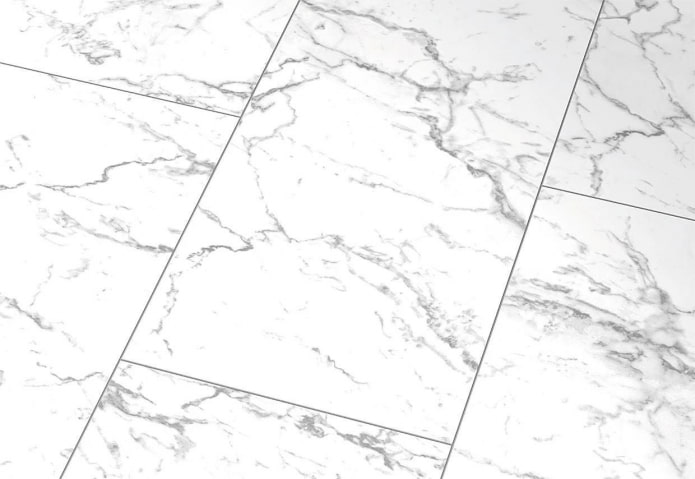
Linoleum
Rolled marble flooring is even rarer than laminate. Dark-colored options are available in stores, mostly commercial grades, because marble is very popular in office and retail spaces.
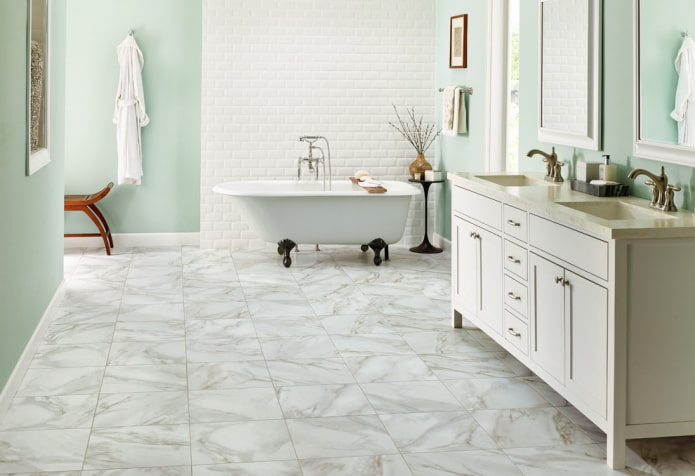
MDF panels
Wall panels are a ready-made option for finishing kitchen aprons and other vertical surfaces. Most manufacturers produce the same patterns on panels and countertops, so when ordering a kitchen you will not have problems with one surface not matching another.
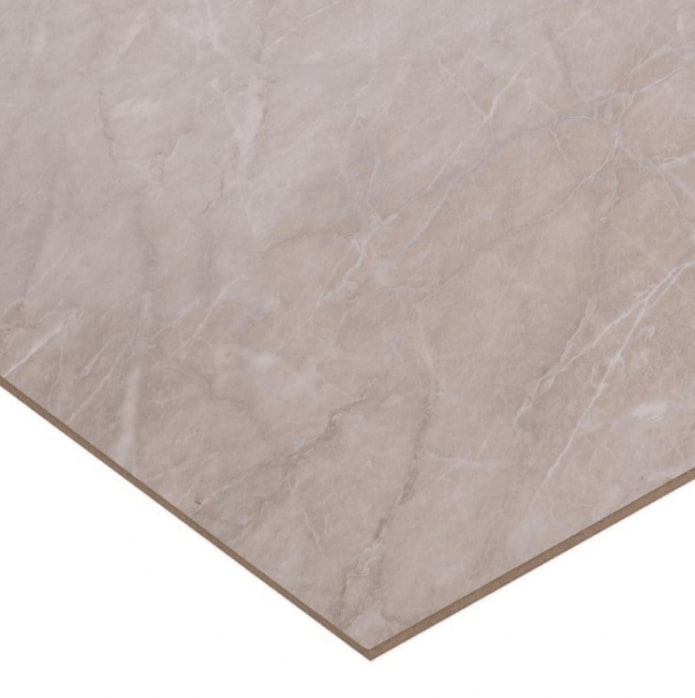
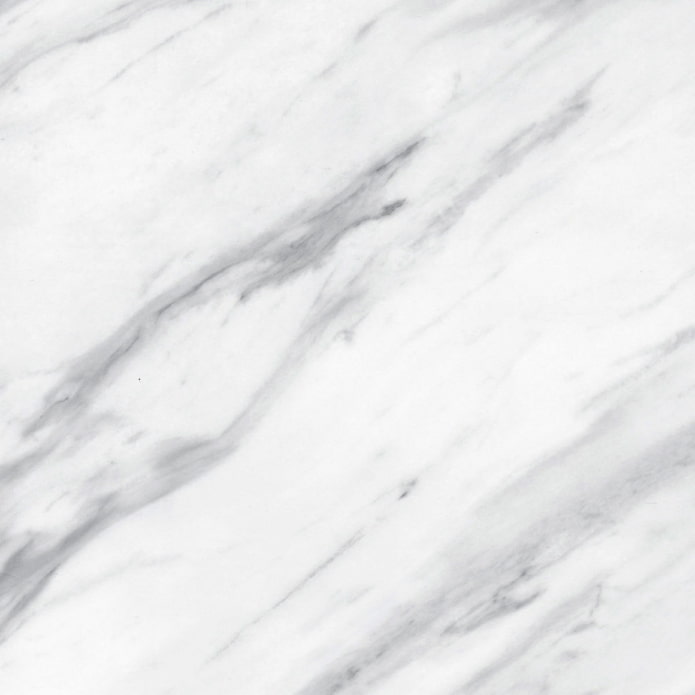
What colors are there?
Most often you can see the use of white marble in the interior. Light base, gray veins – this is what comes to mind first when you hear the word “marble”.
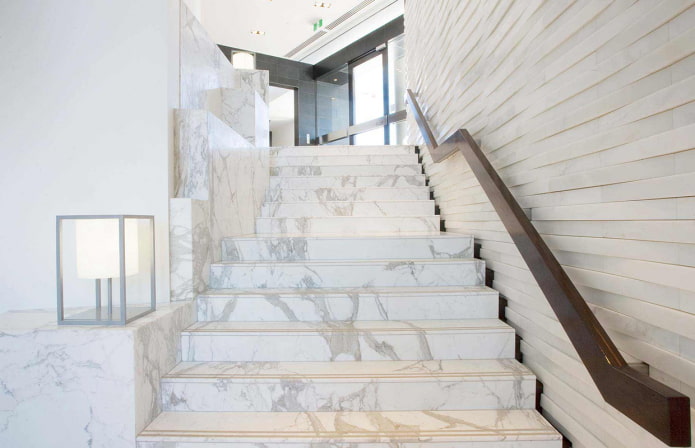
The photo shows a white marble staircase
The second most popular is beige. It looks more gentle compared to the first option, creates a warmer atmosphere. The point is that the high temperature of the shade dampens the coldness of the stone.

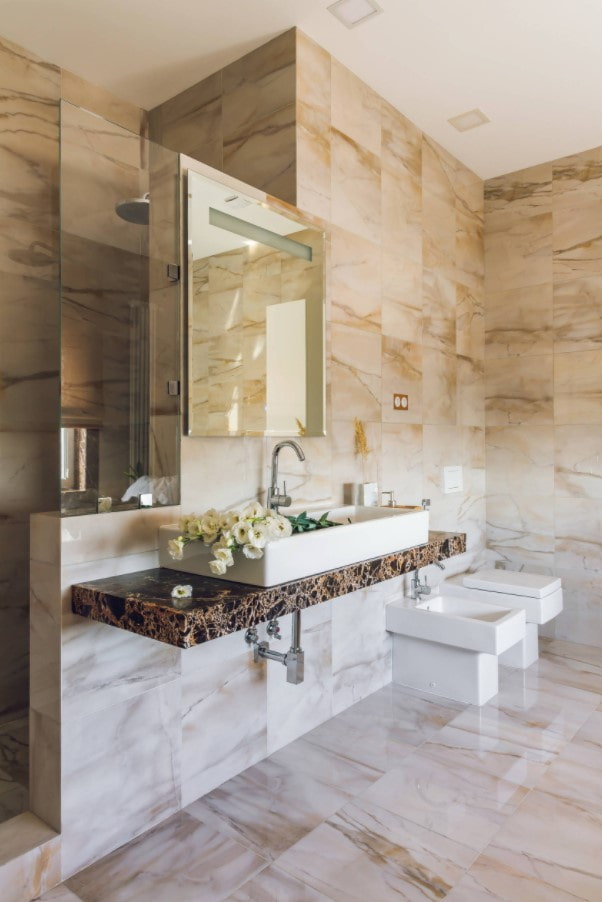
Black marble closes the TOP-3. The dark shade helps to create interesting compositions: it goes well with both light stone and other textures.
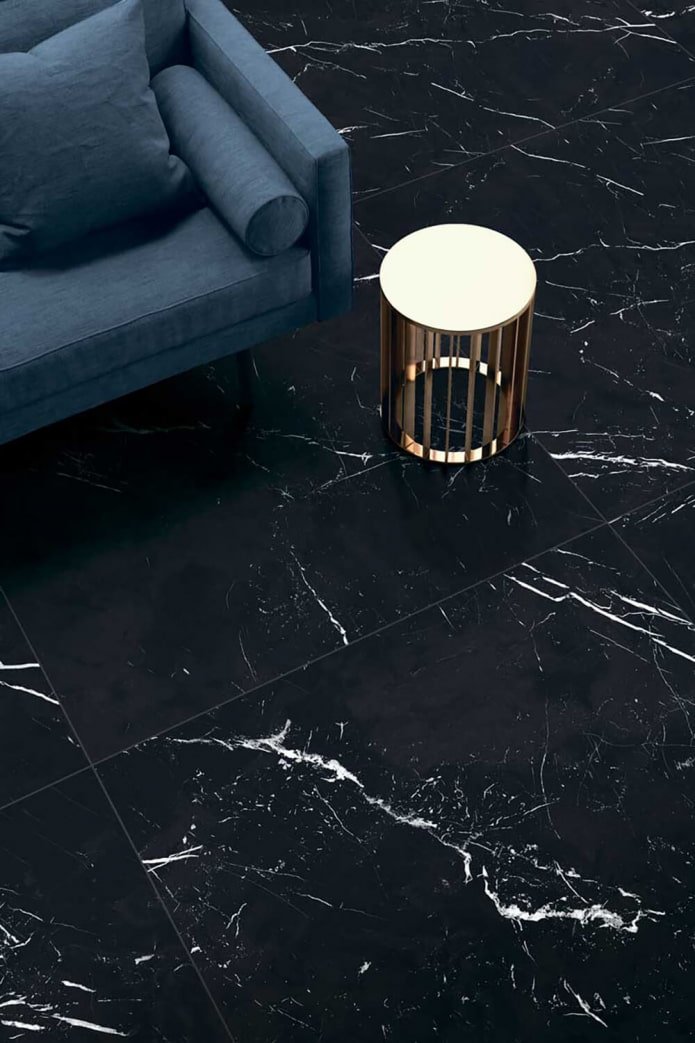
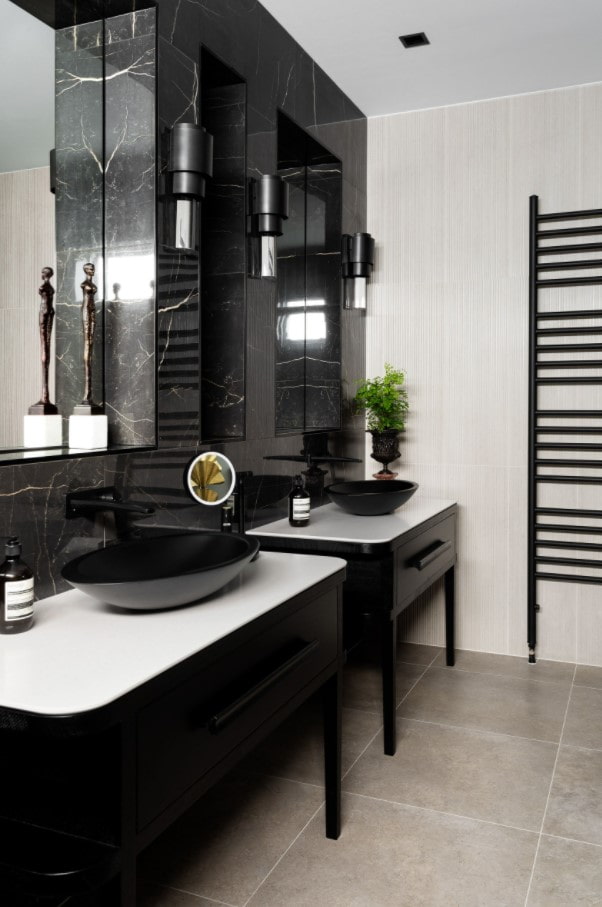
Less popular, but therefore more exclusive are color solutions. Green is associated with malachite, as well as classic-style offices. Brown is a warm black that goes well with beige. Blue, pink, burgundy, lilac are used to highlight accents.
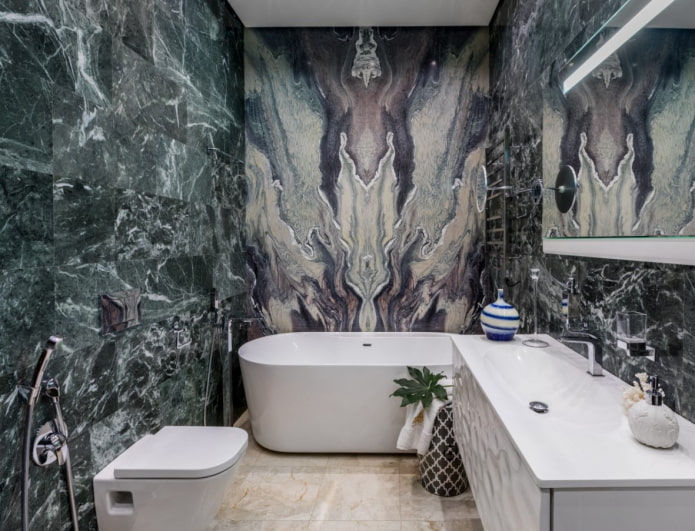
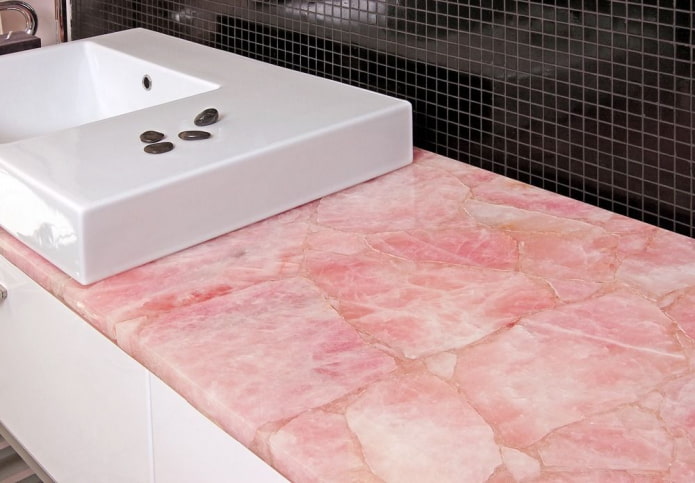
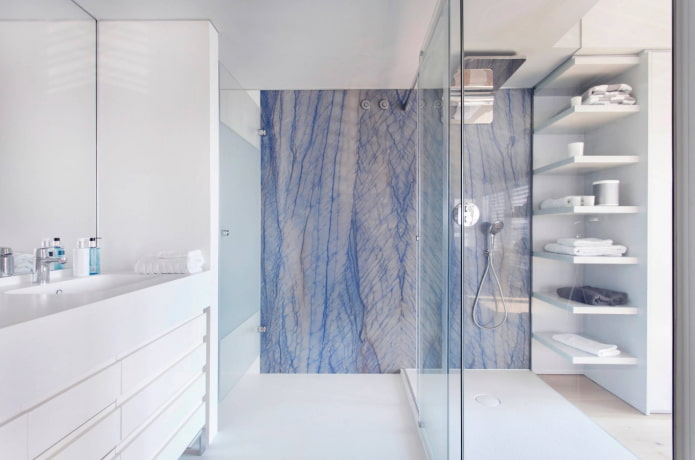
What can be finished?
Marble in the interior on the floor is a sign good taste, high income. Looks stylish, matches any materials, never goes out of fashion. In the kitchen, bathroom, hallway it is better to lay natural stone, tiles, porcelain stoneware. In living rooms, bedrooms, hallways, laminate and linoleum are enough.

The photo shows a floor made of marble tiles in the kitchen
Walls finished to look like marble are good not only in bathrooms: a marble TV section in the living room is appropriate not only in the Baroque style, but also in a modern interior.

When zoning the space, it is not necessary to make high static screens invisible (made of glass) or match the finishing of the remaining walls. Highlight it with marble if you want to draw attention to the partition.
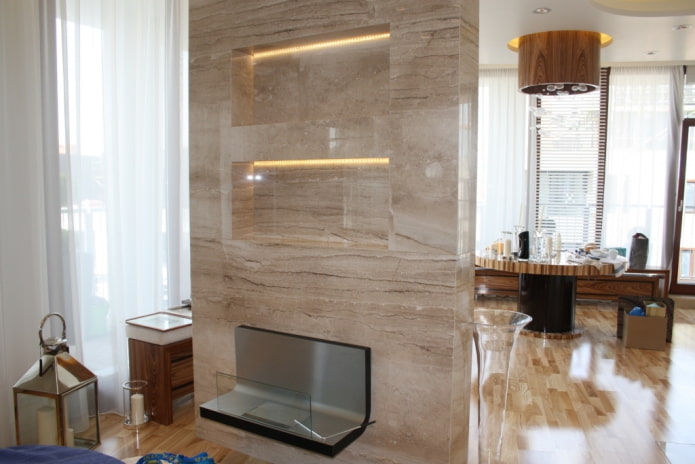
A column is an architectural element that does not necessarily need to be hidden: bring it to the foreground by covering it with marble tiles and additionally highlighting it.

Another architectural detail – a niche requires special attention: to play up a recess in the interior, take imitation marble as a basis: lighting is laid inside or shelves are installed.
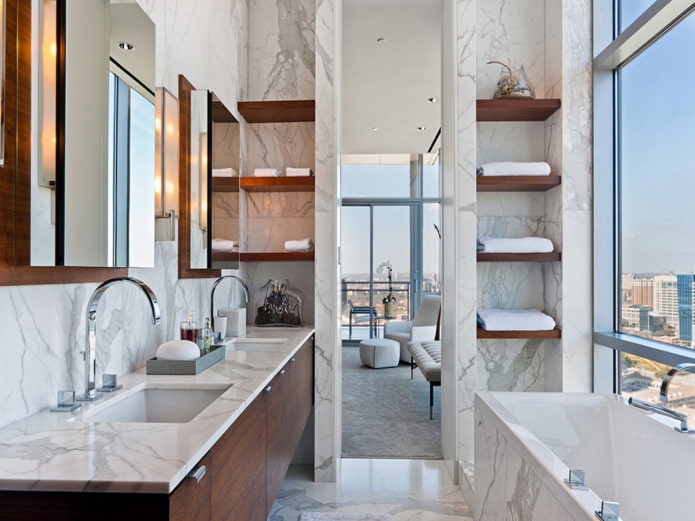
In private houses, the fireplace is considered the central element of the living room, so it should be not only functional, but also beautiful. Order a marble structure or cover a ready-made one with stone.
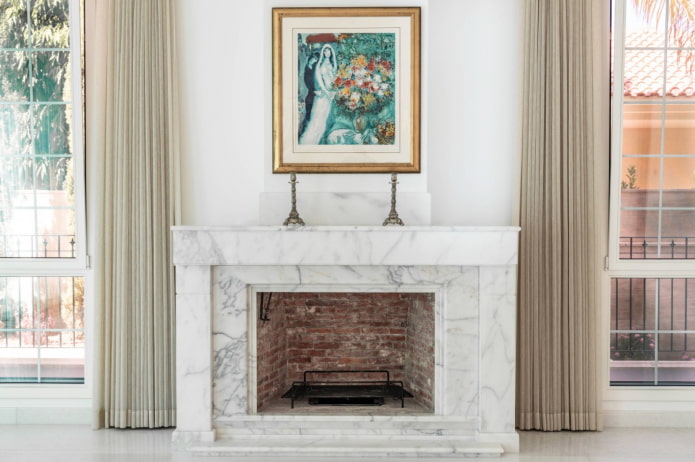
Arches, thresholds, frames do not necessarily have to be wooden: in some styles, marble will be more appropriate for doorways.

Marble finishing will help to turn ordinary window or door slopes into an interior highlight: MDF panels, tiles, flexible stone.

An expensive marble window sill does not require additional decoration: you can even refuse curtains so as not to block this luxurious interior element.
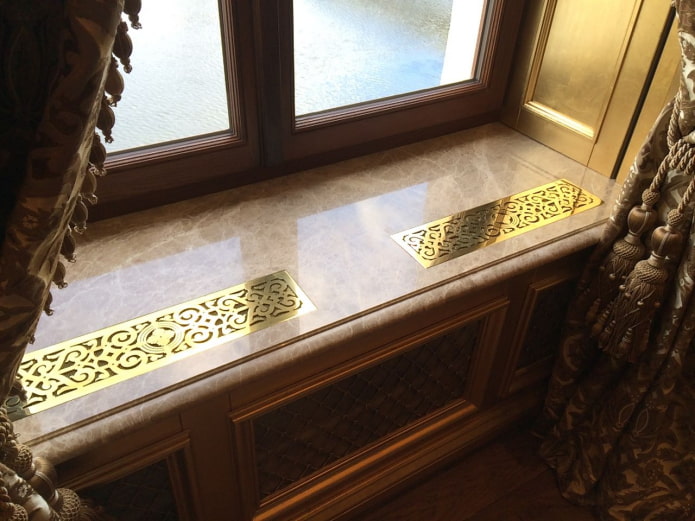
A marble apron will provide protection from splashes of water and grease, as well as a stylish appearance of the kitchen set. To implement the idea, tiles, porcelain stoneware, and MDF panels are suitable.
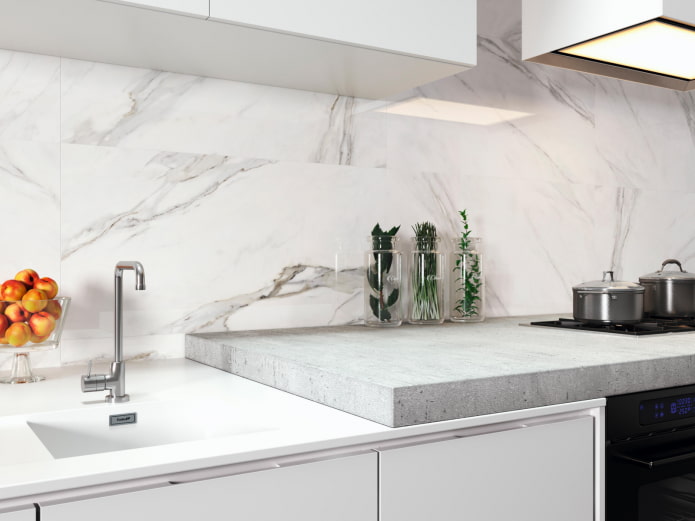
What furniture, decor, and other home products are made?
Most often, a layer of natural or artificial stone replaces the countertop: in the kitchen in the work area, on the dining table, coffee table, console in the hallway. The stone is durable and easy to maintain, so it is irreplaceable as a table base.
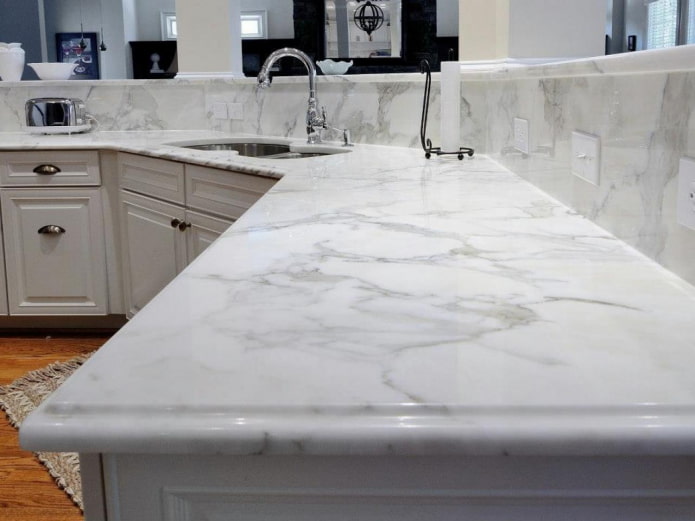
Less often, marble is used for furniture fronts — but it is worth admitting that cabinets with “marble” doors look impressive!
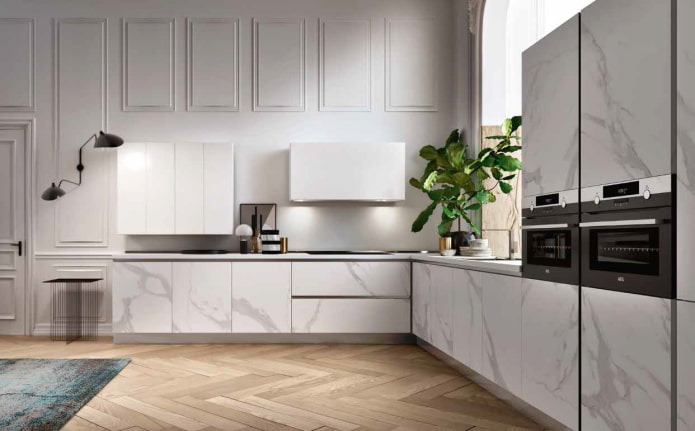
Vases, flowerpots, figurines and other small details made of marble are a wonderful accent for any space.
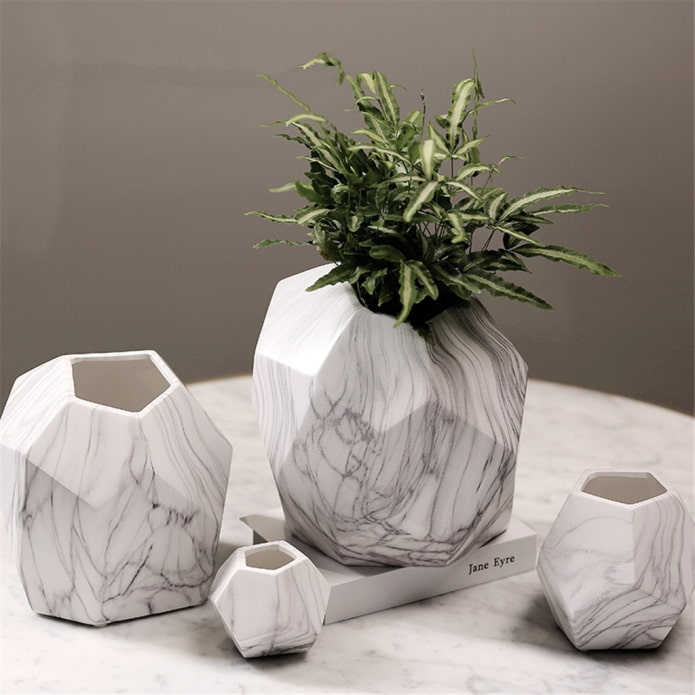
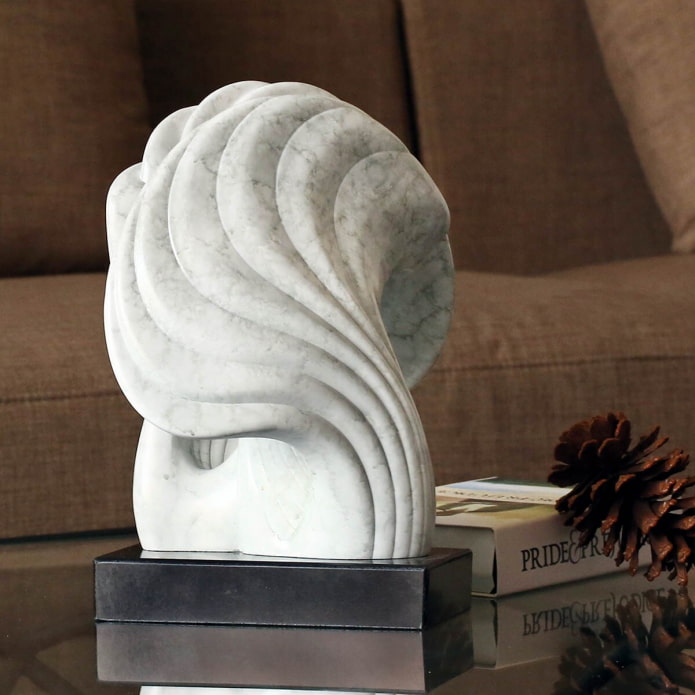
If there are no free horizontal surfaces, marble decor is hung on the wall: in the form of a clock, frames for paintings or mirrors, panels.
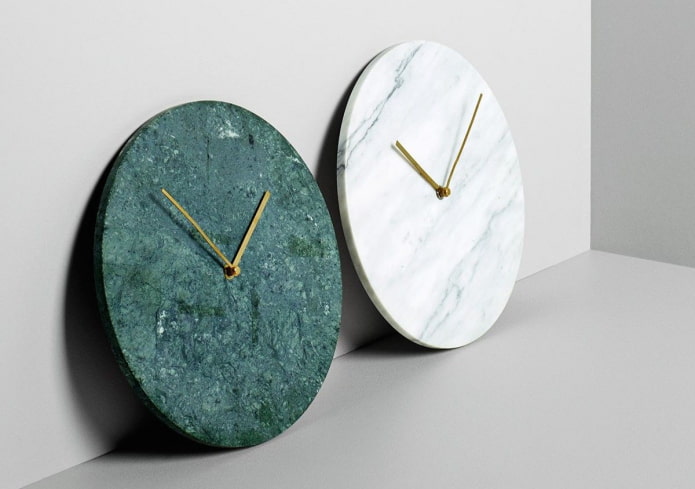
What does marble go with?
When creating a design “for centuries”, combine a marble pattern with wood: this duet will never go out of fashion.
Symbiosis with small glass mosaics looks original in bathrooms.
Variations of gray marble in the interior create harmonious combinations with metal: chrome plumbing or gold decor will make the stone sparkle in a new way.
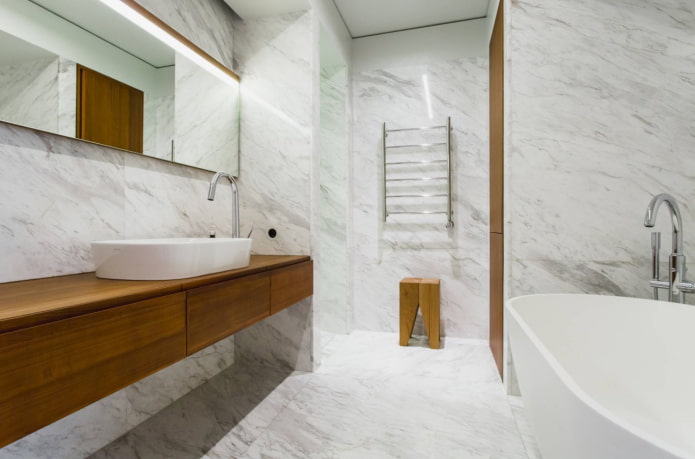
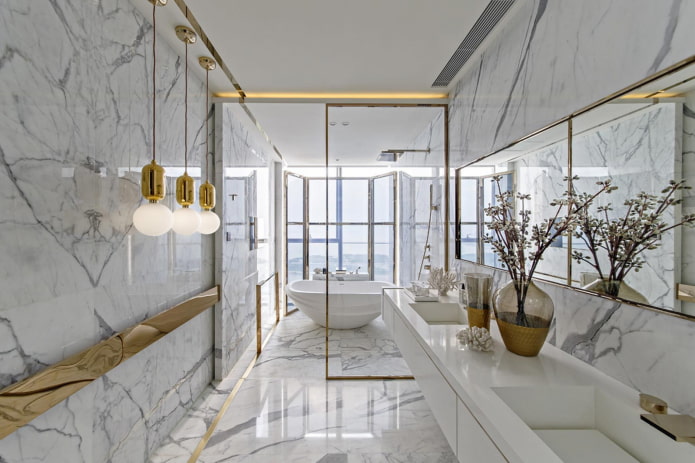
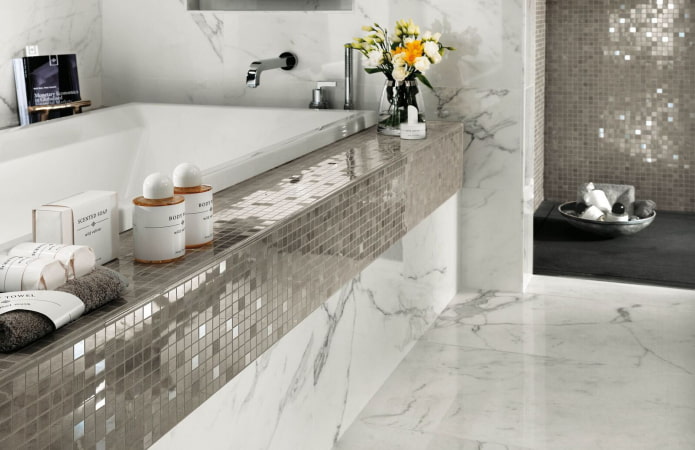
Industrial style offers an original symbiosis with concrete, and so that the pair does not seem too cold, it is diluted with wood.
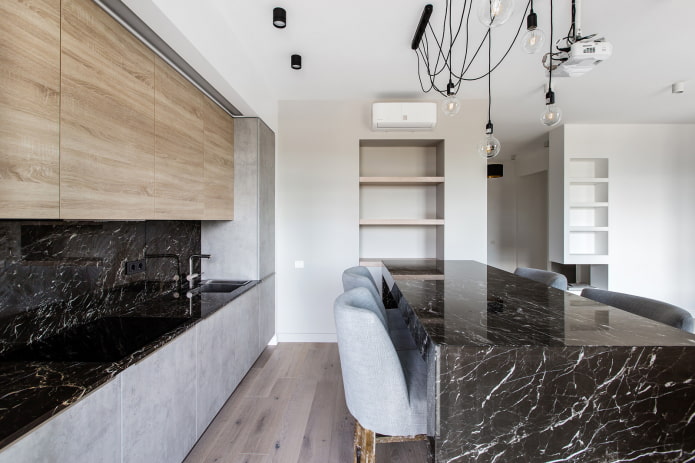
The photo shows a combination of black stone with wood and concrete
What style can it be used in?
Initially, marble was considered an element of exclusively palace styles: baroque, art deco, classic.
Today it has found its place in minimalism, advanced high-tech and even oriental wabi-sabi.
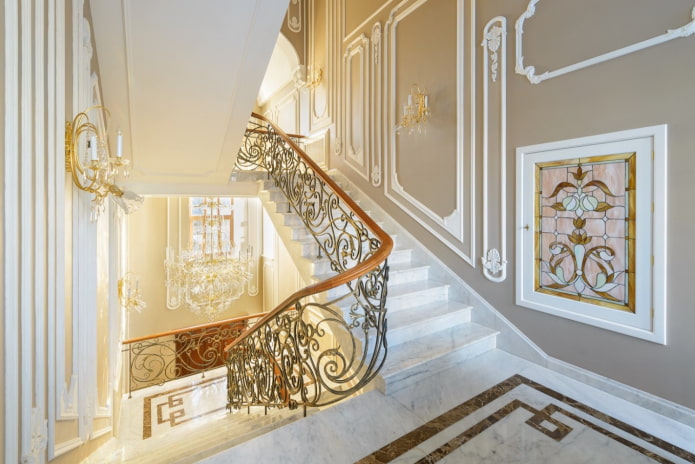
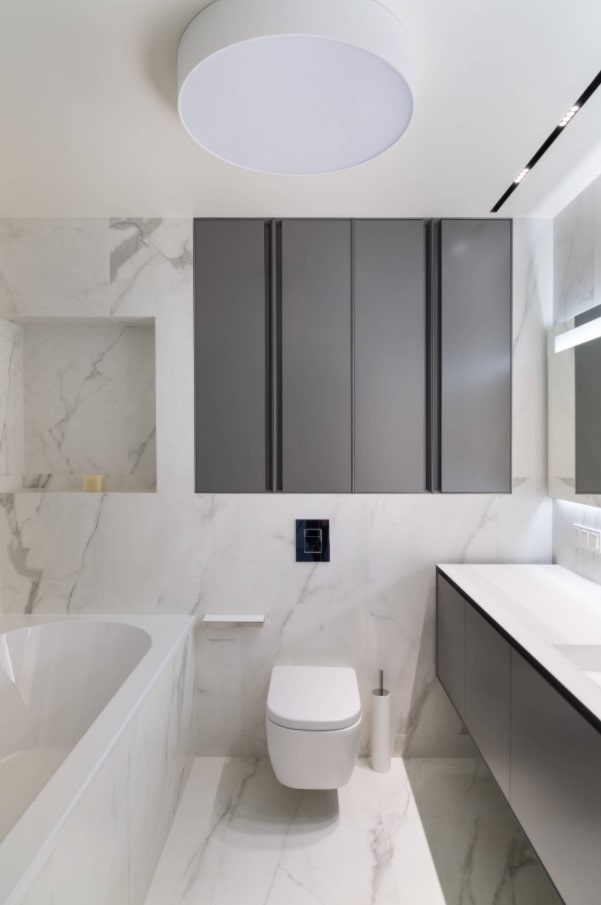
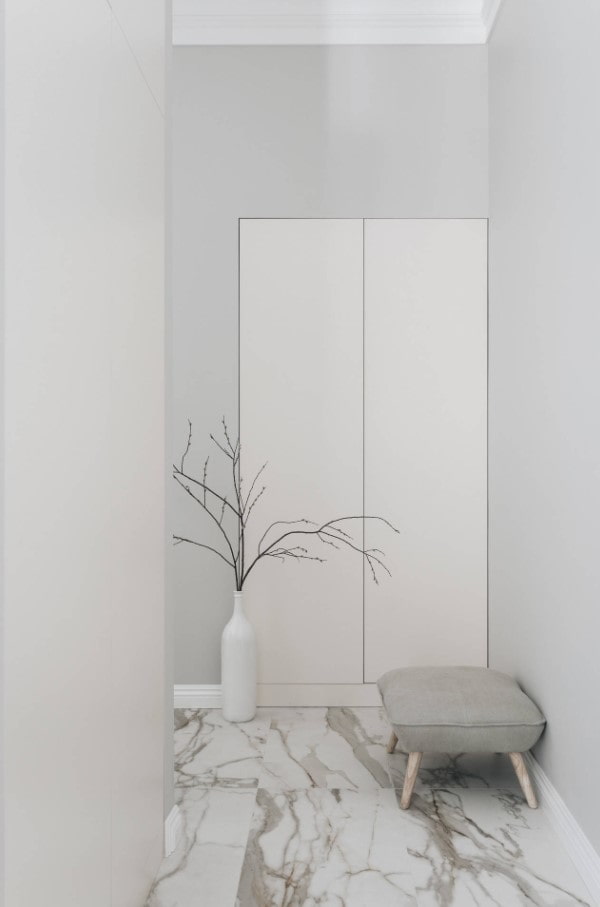
But you can find marble details anywhere. Designs in the neoclassical, scandi, modern, loft styles often include marble floors, bathroom walls or countertops.
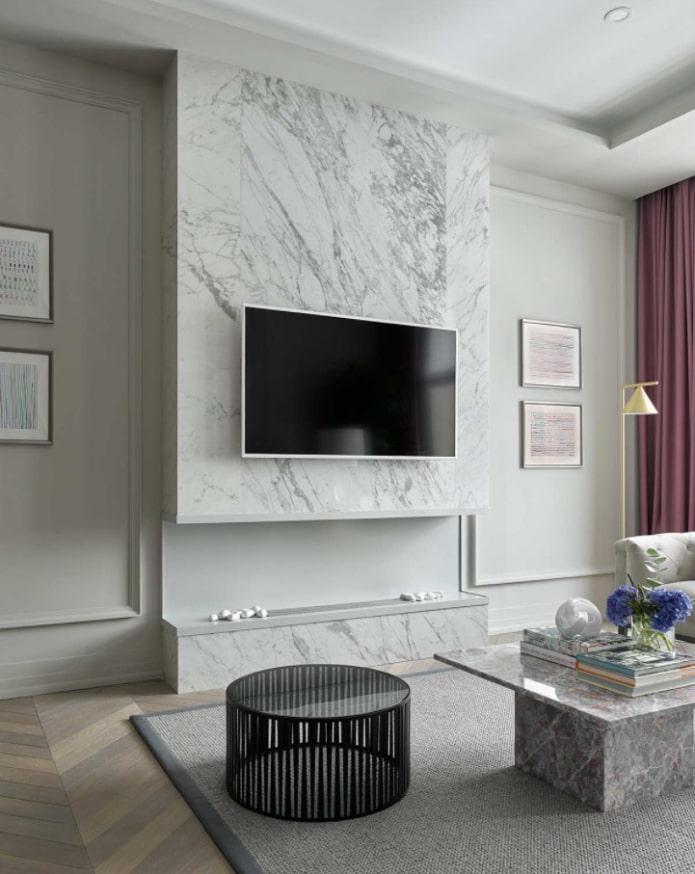
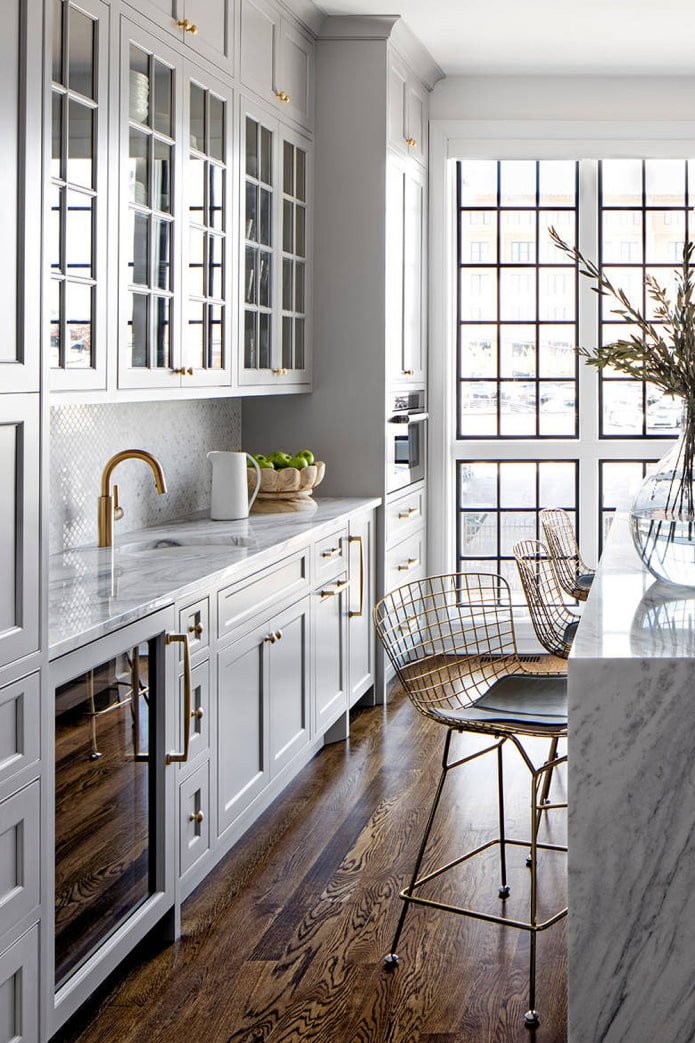
How does it look in the interior of rooms?
It is most common to see marble in bathrooms, but this material is also welcomed in the design of other rooms.
In the kitchen interior, marble is used for the floor, apron, and countertops. For the work area, it is better to choose natural stone – it has bactericidal properties and is not afraid of high temperatures.
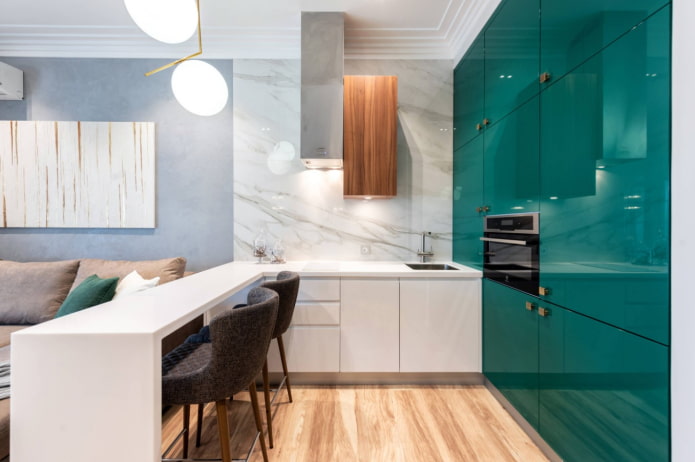
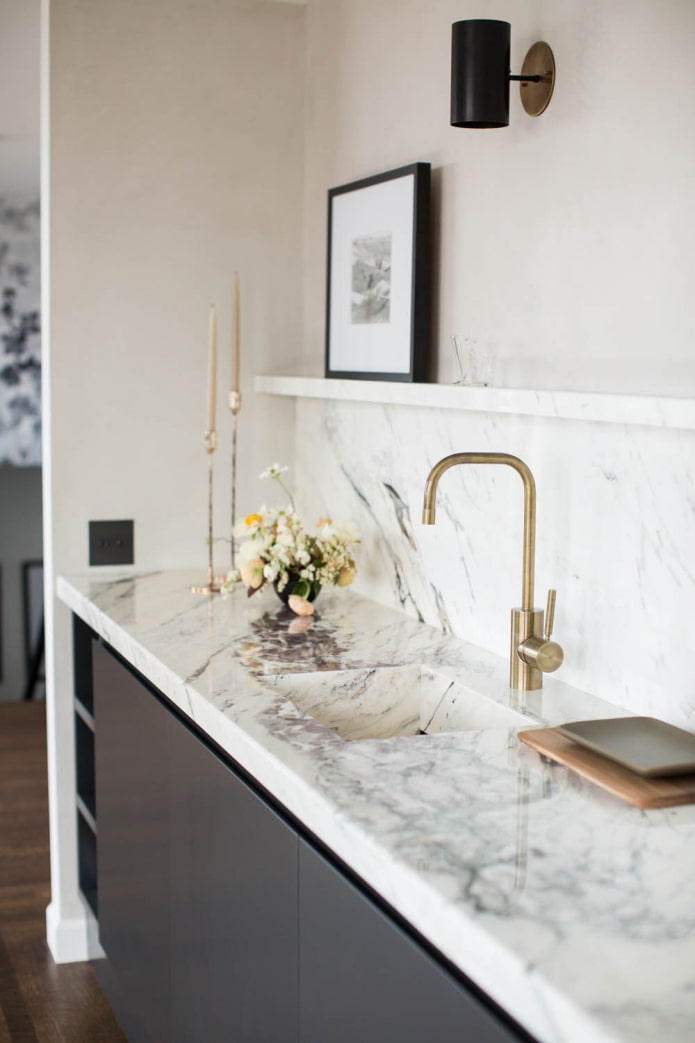
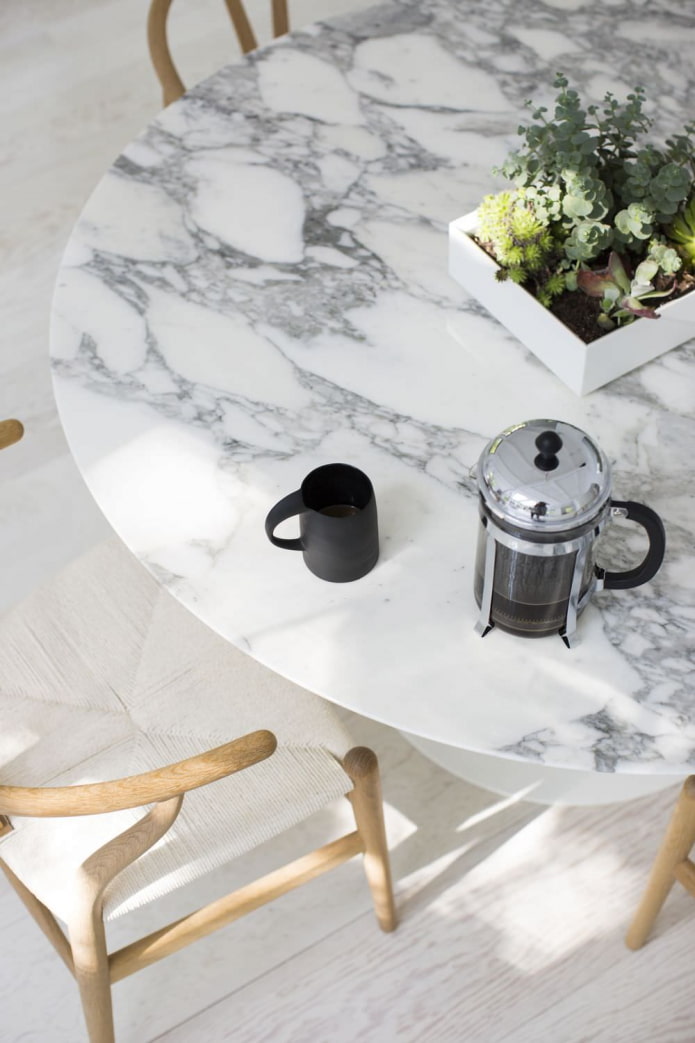
Since the stone in the living room with a lot of textiles – rather an exception, it is used as an accent. Application options: wall behind the TV, coffee table, partitions, columns, window sills.
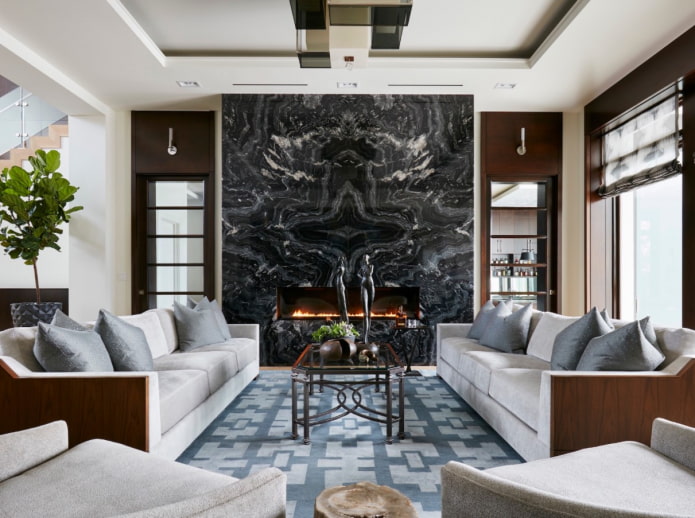
Marble tiles on the floor make it easier to clean the area around the entrance door, and the wall decoration extends the life of the hallway after renovation.

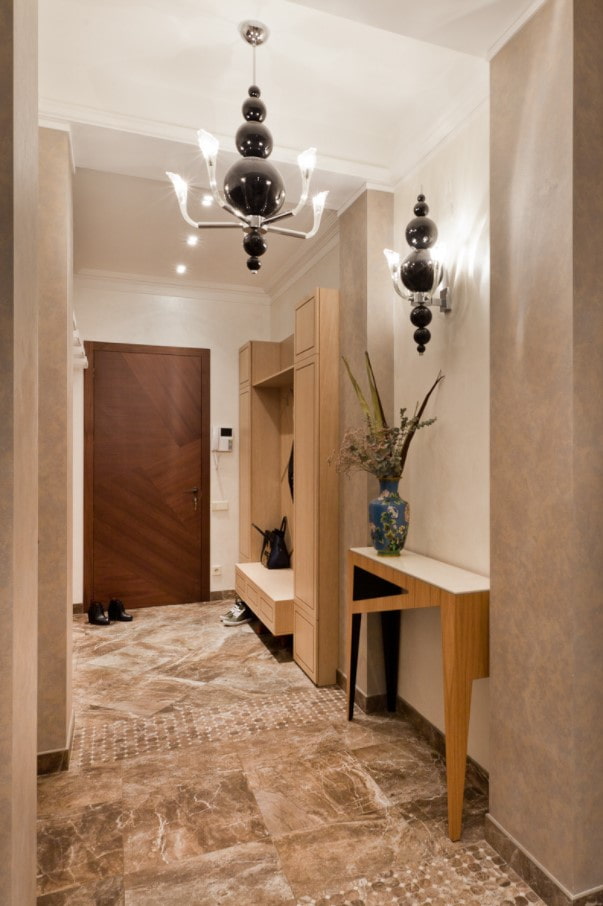
Marble window sills will last for many years even on cold, uninsulated loggias! Are you planning to insulate? Lay marble porcelain tiles on the heated floor.
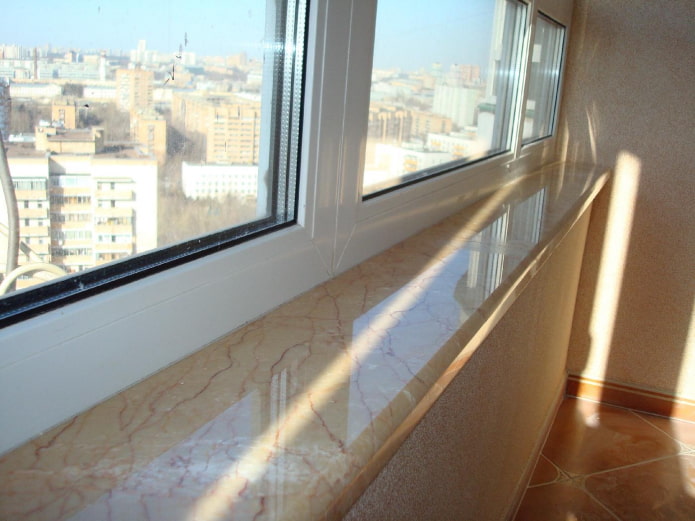
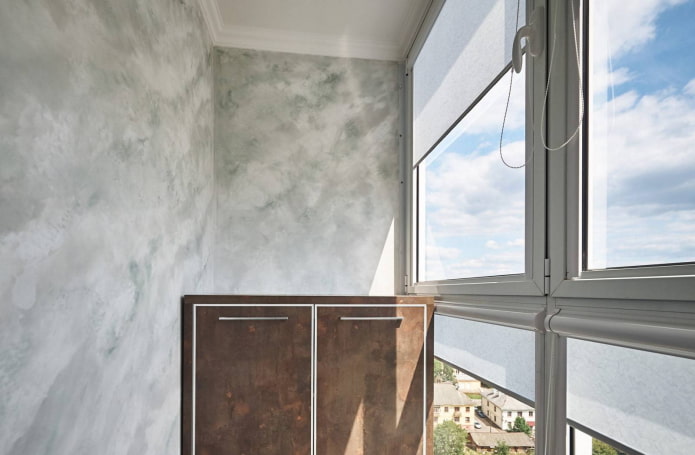
Marble is a multifaceted material! Depending on the color, texture and application, it can be integrated into completely different styles and spaces.
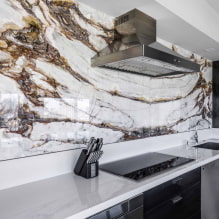
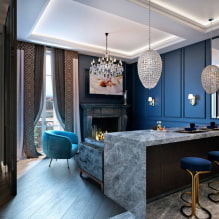

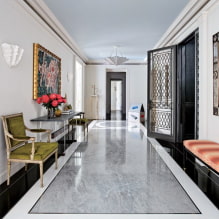
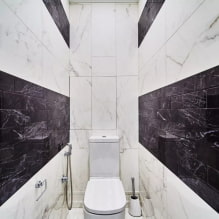
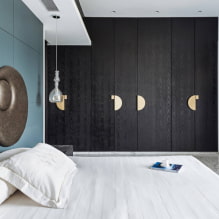
Now reading:
- Kitchen with a sofa: 70 photo examples of design and corner solutions with a place to sleep.
- 15 creative solutions for optimizing space in a small kitchen.
- Your Comprehensive Guide to Buying a Used Skoda Fabia
- Cork wallpaper: properties, style, types, combinations, images and pasting process.
- Scandinavian style kitchen-living room: 41 photos for interior inspiration